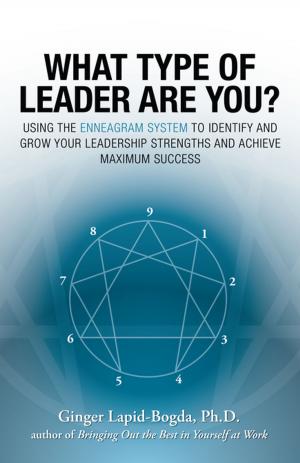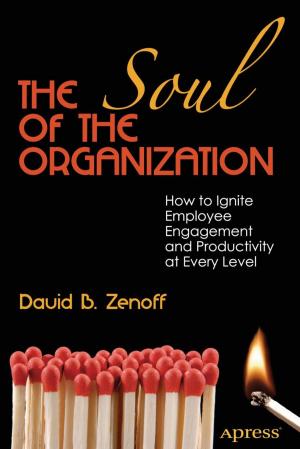The Essential Guide for Hiring & Getting Hired
Business & Finance, Human Resources & Personnel Management, Career Planning & Job Hunting, Management & Leadership| Author: | Lou Adler | ISBN: | 9780988957428 |
| Publisher: | Workbench Media | Publication: | January 31, 2013 |
| Imprint: | Language: | English |
| Author: | Lou Adler |
| ISBN: | 9780988957428 |
| Publisher: | Workbench Media |
| Publication: | January 31, 2013 |
| Imprint: | |
| Language: | English |
This book is written for everyone involved in the hiring process.
It will help hiring managers and recruiters find and hire more top-notch people for any job, from entry-level to senior executive. Using the two-question Performance-based Interview, anyone who is involved in assessing candidates will quickly be more effective and more accurate.
Just as important, it will help job-seekers find better jobs by giving them an inside view of how most companies look for, assess and hire new employees. Hiring top talent starts by clarifying expectations up front. This has been shown to be the primary reason people perform at peak levels. This book is based on the Performance-based Hiring process Lou Adler introduced in his Amazon bestseller, "Hire With Your Head".
Performance-based Hiring is now used around the world in small and large organizations and companies. However, it is a non-traditional hiring process. Performance-based job descriptions—which we call performance profiles—replace the commonly used skills- and experience-based job descriptions. Instead of emotions, feelings and biases, evidence is used to assess competency and fit within the organization. Rather than weed out people who don’t posses some arbitrary list of prerequisites, compelling career messages are used to excite and attract the best.
Due to this unconventional but commonsense approach, David Goldstein of Littler Mendelson, the largest labor firm in the U.S., was asked to review Performance-based Hiring and provide a general statement of validity. Here’s his summary:
"Because the Performance-based Hiring system does differ from traditional recruiting and hiring processes, questions arise as to whether employers can adopt Performance-based Hiring and still comply with the complex array of statutes, regulations, and common law principals that regulate the workplace. The answer is yes.
In particular:
A properly prepared performance profile can identify and document the essential functions of a job better than traditional position descriptions, facilitating the reasonable accommodation of disabilities and making it easier to comply with the Americans with Disabilities Act and similar laws.
Even employers that maintain more traditional job descriptions may still use performance profiles or summaries of performance profiles to advertise job openings. Employers are not legally required to post their internal job descriptions when advertising an open position. Nor is there any legal obligation to (or advantage in) posting boring ads.
Focusing on Year 1 and Beyond criteria may open the door to more minority, military, and disabled candidates who have a less 'traditional' mix of experiences, thereby supporting affirmative action or diversity efforts.
Conducting performance-based interviews ensures that the interviews will be structured and properly focused and minimizes the risk of an interviewer inquiring into protected characteristic. Moreover, since the performance-based interviews are conducted pursuant to a common methodology, one is assured that the candidates are being fairly compared.
Performance-based interviewing promotes fair consideration of the different skills and experiences that each candidate has to offer—which is essential to promoting diversity."
Performance-based Hiring can help companies find and hire the best talent available. On the other hand, understanding how companies make these critical decisions can help job-seekers navigate these tricky waters, the poorly designed hiring processes still in use. But no matter which side of the hiring desk you are on, hiring the right person or getting the right job will increase satisfaction, performance and motivation. All it takes is a little common sense, which surprisingly seems in short abundance in the world of hiring.
This book is written for everyone involved in the hiring process.
It will help hiring managers and recruiters find and hire more top-notch people for any job, from entry-level to senior executive. Using the two-question Performance-based Interview, anyone who is involved in assessing candidates will quickly be more effective and more accurate.
Just as important, it will help job-seekers find better jobs by giving them an inside view of how most companies look for, assess and hire new employees. Hiring top talent starts by clarifying expectations up front. This has been shown to be the primary reason people perform at peak levels. This book is based on the Performance-based Hiring process Lou Adler introduced in his Amazon bestseller, "Hire With Your Head".
Performance-based Hiring is now used around the world in small and large organizations and companies. However, it is a non-traditional hiring process. Performance-based job descriptions—which we call performance profiles—replace the commonly used skills- and experience-based job descriptions. Instead of emotions, feelings and biases, evidence is used to assess competency and fit within the organization. Rather than weed out people who don’t posses some arbitrary list of prerequisites, compelling career messages are used to excite and attract the best.
Due to this unconventional but commonsense approach, David Goldstein of Littler Mendelson, the largest labor firm in the U.S., was asked to review Performance-based Hiring and provide a general statement of validity. Here’s his summary:
"Because the Performance-based Hiring system does differ from traditional recruiting and hiring processes, questions arise as to whether employers can adopt Performance-based Hiring and still comply with the complex array of statutes, regulations, and common law principals that regulate the workplace. The answer is yes.
In particular:
A properly prepared performance profile can identify and document the essential functions of a job better than traditional position descriptions, facilitating the reasonable accommodation of disabilities and making it easier to comply with the Americans with Disabilities Act and similar laws.
Even employers that maintain more traditional job descriptions may still use performance profiles or summaries of performance profiles to advertise job openings. Employers are not legally required to post their internal job descriptions when advertising an open position. Nor is there any legal obligation to (or advantage in) posting boring ads.
Focusing on Year 1 and Beyond criteria may open the door to more minority, military, and disabled candidates who have a less 'traditional' mix of experiences, thereby supporting affirmative action or diversity efforts.
Conducting performance-based interviews ensures that the interviews will be structured and properly focused and minimizes the risk of an interviewer inquiring into protected characteristic. Moreover, since the performance-based interviews are conducted pursuant to a common methodology, one is assured that the candidates are being fairly compared.
Performance-based interviewing promotes fair consideration of the different skills and experiences that each candidate has to offer—which is essential to promoting diversity."
Performance-based Hiring can help companies find and hire the best talent available. On the other hand, understanding how companies make these critical decisions can help job-seekers navigate these tricky waters, the poorly designed hiring processes still in use. But no matter which side of the hiring desk you are on, hiring the right person or getting the right job will increase satisfaction, performance and motivation. All it takes is a little common sense, which surprisingly seems in short abundance in the world of hiring.















